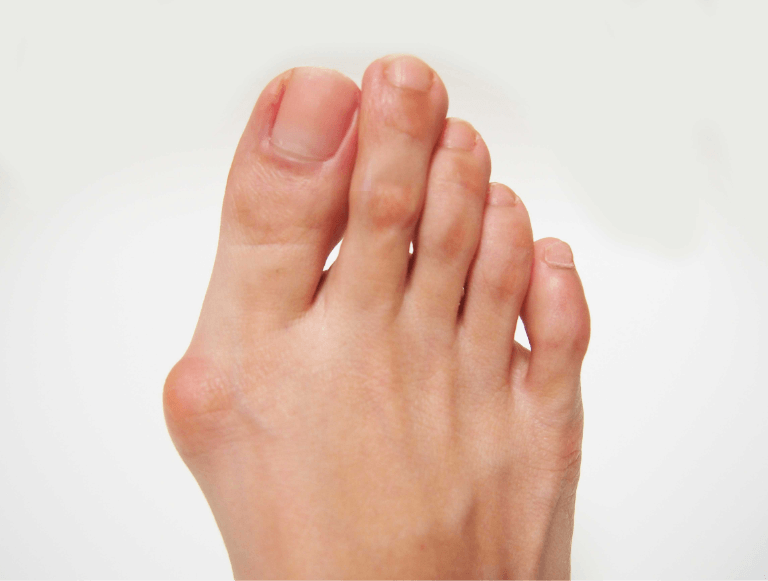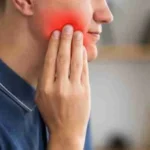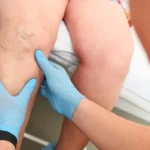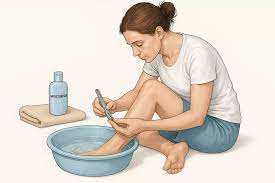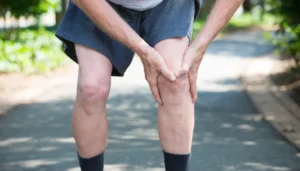Bunions are a common foot deformity that affects the alignment and function of the big toe joint. Some have no symptoms, while others can cause chronic pain. Here is more information on how bunions influence overall foot health through structural changes, movement patterns, and secondary complications:
Impeding Joint Function
A bunion alters the fundamental structure of the first metatarsophalangeal joint, where the big toe connects to the foot. The progressive deviation of the big toe toward the smaller toes creates angular deformity that disrupts normal joint mechanics. This structural change affects the toe’s ability to flex and extend properly during walking and standing activities.
The displaced big toe joint experiences altered pressure distribution patterns that affect surrounding soft tissues. Tendons, ligaments, and muscles around the joint must adapt to the changed alignment, leading to compensatory tension patterns. These adaptations can create imbalances in muscle function that extend beyond the immediate area of the bunion.
Joint capsule stretching occurs on one side of the bunion while compression develops on the opposite side. This uneven stress distribution affects joint lubrication and cartilage health over time. The altered mechanics can lead to joint stiffness and reduced range of motion that impacts the toe’s functional capacity during daily activities.
Impacting Weight Distribution
Bunions significantly alter weight distribution across the foot during standing and walking activities. The prominent bunion creates an uneven contact surface that changes how body weight transfers through the foot. This redistribution often shifts excessive pressure to other areas of the foot that were not designed to handle increased loads.
Gait modifications develop as individuals unconsciously adjust their walking patterns to accommodate bunion discomfort and altered foot mechanics. These compensations can include changes in step length, foot placement angles, and weight-bearing duration on the affected foot. Such modifications can create asymmetrical movement patterns that affect overall walking efficiency.
The foot’s natural arch support system also experiences disruption from bunion-related changes. The big toe plays a role in maintaining proper arch mechanics through its connection to important supporting structures. Bunion deformity can compromise these relationships and affect the foot’s shock absorption capabilities.
Decreasing Foot Function
Bunions often contribute to the development of additional foot problems through cascading mechanical effects. The altered toe alignment and pressure distribution can lead to corn and callus formation on adjacent toes that experience increased friction and pressure from footwear and altered contact patterns. Hammer toe deformities frequently develop in the smaller toes as they accommodate the displaced big toe. The crowding and altered pressures created by bunion progression can cause these toes to bend abnormally at their joints, creating additional areas of pressure and discomfort within shoes.
The foot’s overall flexibility and adaptability to different surfaces become compromised as bunion-related stiffness and compensations develop. This reduced adaptability can affect balance and stability, particularly on uneven terrain or during dynamic activities that require quick directional changes. Footwear selection becomes increasingly challenging as bunion progression creates wider forefoot dimensions and irregular foot contours. Poorly fitting shoes can exacerbate existing problems and create additional pressure points that affect other areas of foot health.
Get Treatment for a Bunion
Bunions create significant biomechanical disruptions that affect joint function, weight distribution patterns, and gait mechanics throughout the foot. These deformities alter normal pressure distribution and movement patterns, leading to compensatory changes that can affect overall foot stability and function. If you have a painful bunion, consult with a qualified podiatrist to gain a treatment plan.


